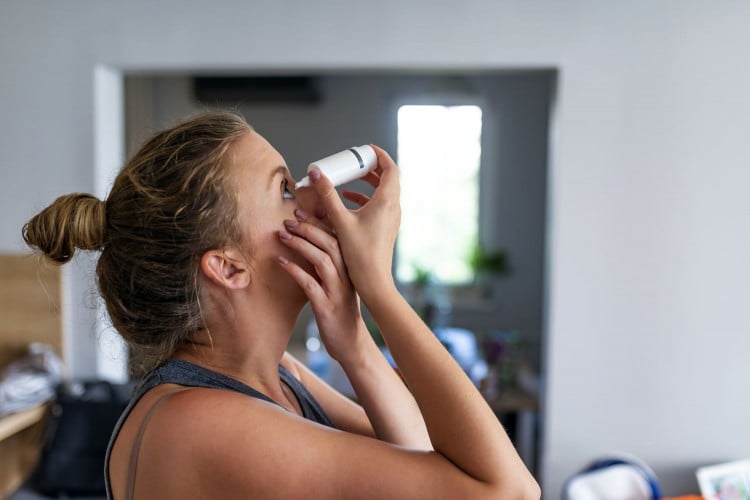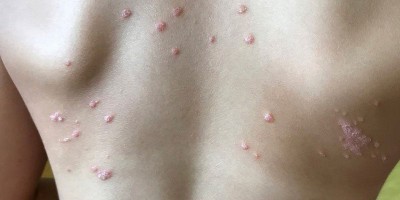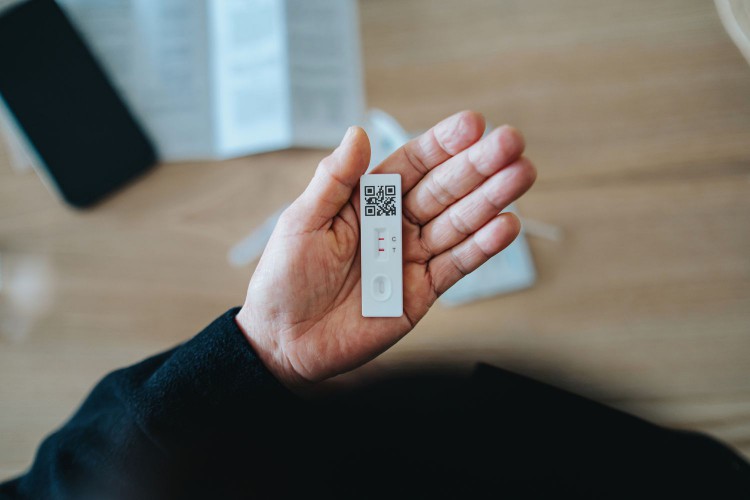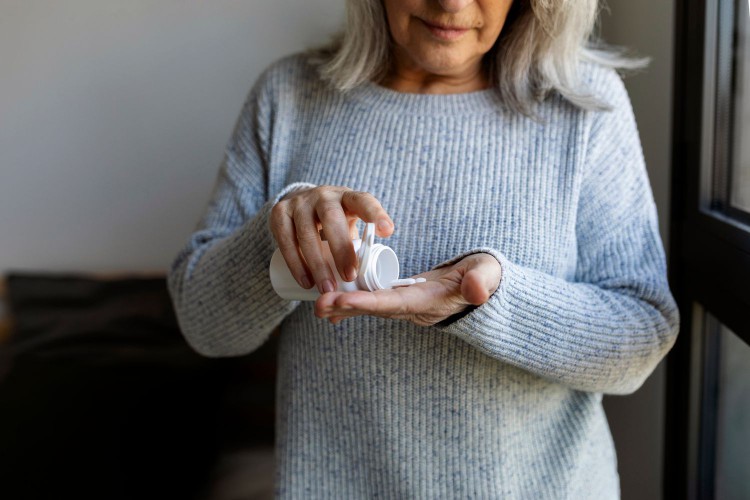- The FDA has issued a warning about two brands of eye drops for potential fungal and bacterial contamination.
- The warning specifically names Dr. Berne’s MSM Drops 5% Solution and LightEyez MSM Eye Drops—Eye Repair; both contain methylsulfonylmethane (MSM).
- No adverse health events have been reported, but using the contaminated eye drops could result in vision-threatening or even life-threatening infections.
Two brands of eye drops may be contaminated with fungus, bacteria, or both, according to a recent warning from the Food and Drug Administration.
The warning specifically names Dr. Berne’s MSM Drops 5% Solution and LightEyez MSM Eye Drops—Eye Repair, which both contain the active ingredient MSM, or methylsulfonylmethane.
Consumers shouldn’t purchase and should stop using Dr. Berne’s and LightEyez eye drops immediately, the FDA said, as neither are sterile.
MSM is a compound sometimes used in alternative medicine, and it may have anti-inflammatory or antioxidant properties. The FDA said that there are currently “no legally marketed ophthalmic drugs that contain MSM as an active ingredient.”
Dr. Berne’s MSM Drops 5% Solution and the LightEyez MSM Eye Drops—both sold online—are therefore considered “unapproved drugs.”
Dr. Berne made a verbal agreement with the FDA to recall the MSM eye drop product on Monday and recommended that any customers discontinue the use of the MSM 5% Lot# 6786. On the product webpage, Dr. Berne wrote that he’ll be doing his “own testing with samples using a [third] party laboratory on all MSM products.”
Consumers with the Dr. Berne product can contact the MSM eye drop manufacturer SunStar Organics for a refund.
The FDA said it contacted LightEyez on Monday to discuss further steps to protect consumers, but to date, has not yet heard back. LightEyez currently still has their MSM eye drop product listed on their website, though it’s sold out.
No adverse health events have been reported, but using the contaminated eye drops could result in vision-threatening or even life-threatening infections.

Getty Images / ljubaphoto
Why Are Contaminated Eye Drops a Concern?
The FDA’s recent warning is a proactive move, said Loretta Szczotka-Flynn, OD, PhD, Searle-Huang professor of ophthalmology and visual sciences and director of the vision research coordinating center at the Case Western Reserve University School of Medicine.
In February, another type of eye drops, called EzriCare Artificial Tears, were recalled due to contamination with drug-resistant bacteria. In that outbreak, the bacteria Pseudomonas aeruginosa caused hospitalizations, cases of vision loss, and even death.
“It was a pretty bad series of cases. So I think since then, the FDA has really gotten heightened to that,” she told Health. “They went out and conducted some kind of sample testing of other eye drops on the market—presumably they were looking at drops that are unregulated by them, or are coming from small manufacturers that might have had contamination concerns.”
No adverse events have yet been connected to these Dr. Berne’s or LightEyez eye drops, but these types of fungal or bacterial contaminations can be extremely dangerous, as was seen with the EzriCare recall.
The Dr. Berne’s MSM eye drops were found to contain Exophiala, a fungus, as well as the Bacillus bacteria. And the LightEyez drops that were tested had four different types of bacteria—Methylorubrum, Mycolicibacterium, Mycobacterium, Pseudomonas.
Pseudomonas was the same bacteria found in the EzriCare Artificial Tears, though it’s possible it was a different strain, Szczotka-Flynn said.
Regardless of the specific microbe, anything that grows in what should be sterile solution is cause for serious concern, Szczotka-Flynn added.
“Under no circumstances should there ever be any live organisms in any eye drops that we use,” she said.
The eye is capable of fighting off different types of fungi or bacteria that come from our normal environment, such as getting water or dirt in your eye, Szczotka-Flynn explained, but weaknesses in the eye can open up the door to issues.
In particular, sleeping in daily-wear contacts or not replacing them frequently can harbor organisms and keep them in contact with the cornea longer, allowing infection. (It’s OK to sleep in extended-wear contact lenses, according to the National Eye Institute.) Rubbing the eye frequently or scratching it in some other way can also have this same effect, Szczotka-Flynn said.
“Sometimes our eye’s defense mechanisms get altered or get threatened,” she said. “These bacteria or fungi can root themselves in the eye pretty easily.”
Antifungal or antibiotic eye drops can usually get rid of an infection, she added, but things can quickly become more serious.
“The cornea is the window to the eye, the window to the world,” said Szczotka-Flynn. “Even if a corneal ulcer is taken care of and treated, it can leave a permanent scar that will forever affect that patient’s vision.”
Reusable Contact Lenses May Increase Risk of Rare, Sight-Threatening Eye Infection
When It Comes to Eye Drops, Stick With Known Brands
Of course, when people buy eye drops, they expect that they’re getting a safe and healthy product. Most of the time this is the case, but it’s important that people do their research before buying a solution that goes in their eye.
Both the Dr. Berne and LightEyez drops named in this FDA warning contained an added active ingredient, MSM, though it’s not clear how that may have played a role in this contamination.
Sometimes adding ingredients to eye drops can make it easier for microbes to grow, said Szczotka-Flynn, but it’s hard to know if that was the case here.
More likely, she said, there was probably some breakdown in sterility at some point in the manufacturing or quality control process.
MSM is “generally recognized as safe” in supplement form, but the fact that it’s not approved for use in eye drops likely made these two products a “red flag in the FDA’s eyes,” Szczotka-Flynn added.
It’s understandable that people might be drawn to MSM eye drop products like these—LightEyez says their product “repairs the eyes and increases overall eye vitality,” and Dr. Berne says the drops “leave your eyes feeling brighter, fresher, and rejuvenated.”
However, when it comes to choosing the safest eye drops, Szczotka-Flynn explained, it’s better to stick with well-known, trusted brands.
“Big name manufacturers, you know their quality control is there, you know that they have met FDA standards in their fabrication facilities,” she said. “I’d stay away from generics and I’d definitely stay away from online-only sellers.”
The 11 Best Eye Drops to Relieve Dry Eyes







